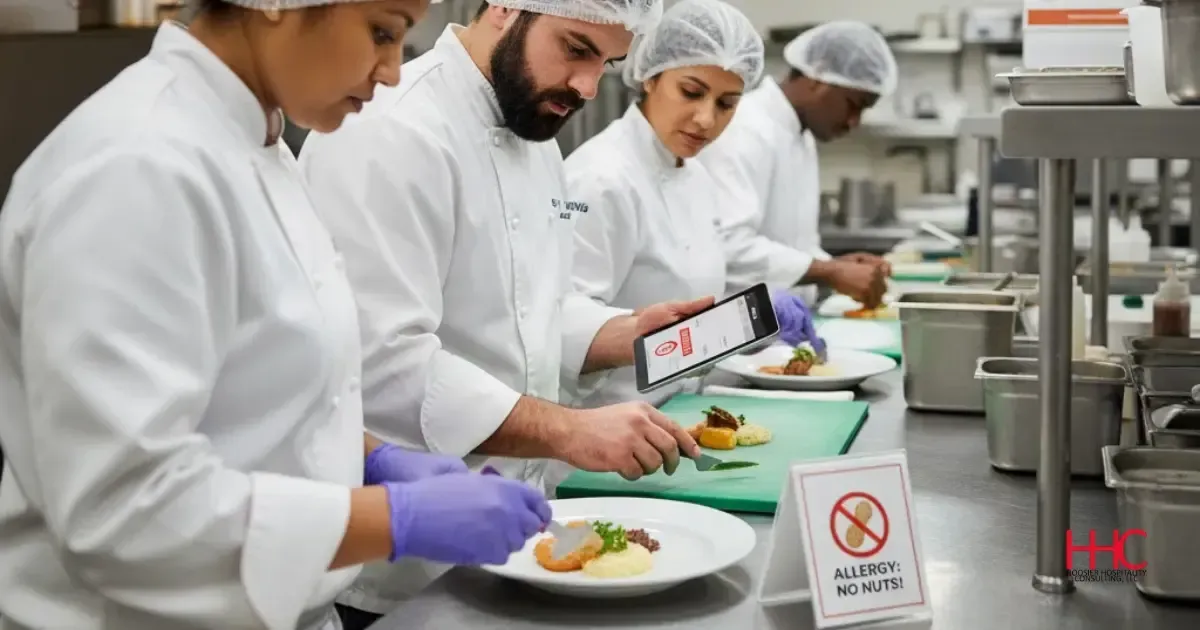The Secret Ingredient to True Food Safety: Why Live Classrooms Still Reign Supreme
In our increasingly digital world, it's tempting to think that every learning experience can be replicated online. From mastering a new language to earning a degree, the internet offers a convenient path to knowledge. And for many certifications, online options are perfectly valid. But when it comes to something as critical as food safety certification, relying solely on a screen might be missing a crucial ingredient: the dynamic, interactive power of a live classroom.
While online food safety courses certainly have their place for review or supplementary learning, here's why investing in live, classroom instruction offers unparalleled benefits that can truly elevate your understanding and application of food safety principles:
1. The Power of Direct Interaction: Your Questions, Answered Instantly
Ever found yourself staring at an online module, a burning question forming in your mind, only to realize there's no immediate way to get clarification? In a live classroom, that's never a problem. Experienced instructors are on hand to:
- Answer questions in real-time: No waiting for email replies or scouring forums. Get immediate, personalized feedback.
- Clarify complex concepts: Sometimes, a quick rephrasing or a different example can make all the difference, making even intricate regulations understandable.
- Address specific concerns: Have a unique challenge in your specific food service environment? An instructor can offer tailored insights and guidance.
This direct line of communication is invaluable, ensuring no critical information is misunderstood and that you leave with a comprehensive grasp of the material.
2. Enhanced Understanding Through Discussion & Real-World Scenarios
Food safety isn't just about memorizing rules; it's about interpreting and applying them in diverse situations. While online courses can present information, they often lack the depth of interactive discussion that a live setting provides:
- Dynamic Q&A sessions: Beyond just answering individual questions, instructors can facilitate group discussions that explore nuances and different interpretations of food safety standards.
- Analysis of real-world case studies: Together, the class can dissect actual incidents and learn how to prevent similar issues, offering perspectives you might not consider alone.
- Clarification of grey areas: Food safety guidelines can sometimes seem abstract. An instructor can bridge the gap between theory and practice, helping you understand how regulations translate to your daily operations.
These interactive elements transform passive learning into active understanding, preparing you to apply your knowledge effectively.
3. Networking Opportunities: Learn from Your Peers
One of the often-overlooked benefits of a live classroom is the chance to connect with other food service professionals. You'll be sharing a learning environment with:
- Individuals from diverse backgrounds: Gaining insights into different types of establishments and their unique food safety challenges.
- Experienced veterans and newcomers alike: A rich exchange of knowledge and perspectives that broadens your understanding of industry best practices.
- Potential mentors and collaborators: Building professional relationships that can extend beyond the classroom, creating a valuable support network.
These connections can be a valuable resource for ongoing learning and support in your career, fostering a sense of community around shared safety goals.
4. Focused Learning Environment: Minimize Distractions
Let's be honest: learning online from home often comes with a myriad of distractions. The pile of laundry, the tempting social media notification, or the pet demanding attention can all pull your focus away from critical food safety information. A dedicated classroom environment provides:
- A structured and disciplined setting: Designed purely for learning, free from household interruptions and the demands of your personal environment.
- Peer accountability: Being in a room with others focused on the same goal can boost your concentration and commitment to the material.
- Reduced temptation: No easy access to other tabs or personal tasks pulling your attention, allowing for deeper immersion in the subject matter.
This dedicated focus ensures you absorb and retain more of the essential information, leading to a stronger foundation in food safety.
5. Enhanced Engagement and Retention: A More Memorable Experience
The dynamic nature of a live classroom often leads to a more engaging and memorable learning experience. Think about it:
- Lively discussions: Hearing different viewpoints and sharing your own can make complex concepts stick in your mind more effectively than reading alone.
- Instructor enthusiasm: A passionate and knowledgeable instructor can make even the most technical information interesting and relatable, fostering a better learning environment.
- Structured pace: The rhythm of a live class, with scheduled breaks and specific topics, can aid in information processing and recall.
When food safety knowledge becomes ingrained and memorable, it's more likely to be consistently applied in your day-to-day operations.
Conclusion: Investing in Safety, Investing in Success
While online options offer undeniable convenience, when it comes to food safety certification, the benefits of live, classroom instruction are clear. It's an investment in deeper understanding, practical application through discussion, enhanced engagement, and ultimately, a safer environment for your customers and your business. So, the next time you're considering your food safety training options, remember that sometimes, the best ingredients are found right in front of you – in a classroom full of dedicated learners and an expert instructor.
Enroll in a live class today!






